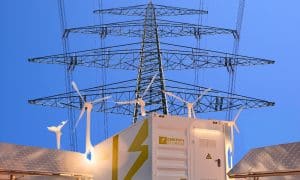A discussion paper released at Intersolar North America last week suggests the demand for energy storage in the USA could significantly boost solar power jobs in the near future.
The Solar Foundation estimates approximately 27,000 solar and battery storage related deployment jobs in 2021 in the USA, including 9,000 storage installation jobs tied to solar, and 18,000 solar installation jobs that would not occur if storage was not available.
“Storage technologies are making solar energy even more reliable, while increasing its appeal among consumers,” said Andrea Luecke, President and Executive Director at The Solar Foundation. ” Our preliminary research has found that storage will also have a significant economic impact, creating tens of thousands of new, high-quality solar jobs within the next five years.”
Last year, 221 megawatts of energy storage was rolled out in the USA, 243% more than in 2014. Of this, an estimated 187 megawatts was front-of-meter (utility scale) and the remainder behind-the-meter (residential and non-residential).
The US is expected to install 2,081 of storage by 2021, with the greatest growth in the residential/non-residential sector; which will account for 49% of deployment.

” As storage costs decline, the value of the solar + storage package increases,” states the paper. ” The package cost is higher than just solar but of greater value – so storage will likely increase PV installation and related employment.”
The authors acknowledge a number of assumptions were necessary in compiling the report and says additional research is required in order for any future analysis to be more rigorous.
The discussion paper – Solar + Storage Jobs – can be viewed here (PDF).
In related news, Bloomberg reported on Friday the same tax incentives that have boosted uptake of solar power in the USA may also be applied to energy storage under a bill introduced in the Senate.
In order to qualify for the tax credits, at least 3 kilowatt-hours of battery storage would need to be installed in residential scenarios and a minimum 5 kilowatt-hours in commercial applications.
In Australia, government supported battery rebates and subsidies are scant; but other incentives can be applied to battery energy storage systems.















































